How To Use Yoga Blocks to Increase Flexibility And Strength: A Comprehensive Guide
Are your yoga blocks languishing in the corner, their potential untapped? It’s time to rekindle their value and reintegrate them into your practice for enhanced flexibility and strength. Fear not; we’re not advocating for complex poses or Asana that fade from memory. Instead, we invite you to explore classic yoga postures invigorated by 11 innovative ways to leverage yoga blocks.
Understanding Yoga Blocks
Yoga blocks come in various sizes, shapes, and materials, catering to different body types and levels of flexibility. They can be used in a multitude of ways, helping practitioners find more comfort and ease in their poses. Yoga blocks essentially act as extensions of your arms or legs, providing additional reach when flexibility is limited.
Choosing the Right Yoga Blocks
When selecting yoga blocks, consider your personal preferences and needs. Foam blocks are lightweight and provide a soft surface, making them great for beginners. Cork blocks are sturdy and offer more stability, suitable for advanced practitioners. Experiment with different options to find what feels most comfortable for you.
You can also use the alternatives of yoga blocks, Which we have Discussed in already.
How to Use Yoga Blocks to Increase Flexibility
Yoga blocks are versatile props that provide support and stability during yoga poses. They come in various sizes and materials, allowing you to customize your practice to your body’s needs. Here’s is a list of Yoga Poses with blocks to increase flexibility and strength:
Some Yoga Poses With Blocks
1. Elevating Firefly Pose
Firefly Pose is often seen as an advanced and elusive posture, requiring a blend of strength, flexibility, and balance. However, with the strategic use of yoga blocks, this challenging pose becomes more approachable and achievable.
- Blocks under Hands: As you prepare for Firefly Pose, consider placing yoga blocks beneath your hands. By elevating your hands with the blocks, you create a platform that brings the ground closer to you. This alteration allows for a smoother transition into the pose, especially for those who are working on developing their hamstring flexibility. The blocks provide extra height and support, making it easier to lift your body off the ground and maintain balance.
2. Elevating Half-Moon Pose (Ardha Chandrasana)
Half-Moon Pose is an invigorating standing balance that requires core strength, stability, and flexibility. Incorporating yoga blocks into this pose can help you find more space and stability as you explore the full extension of your body.
- Block under Bottom Hand: To enhance your Half-Moon Pose, consider using a yoga block under your bottom hand. This adjustment helps those who struggle to reach the floor comfortably. By placing the block under your hand, you create a raised surface that brings the floor closer to you. This modification not only allows for better alignment but also helps you focus on opening your chest and extending your top leg with greater ease.
3. Elevating Pyramid Pose
Pyramid Pose, also known as Parsvottanasana, is a forward fold that targets the hamstrings and spine. Adding yoga blocks to this pose can provide support and make it more accessible, especially for individuals with tight hamstrings.
- Block under Hands: When entering Pyramid Pose, consider using yoga blocks under your hands. By placing the blocks on either side of your front foot and placing your hands on them, you create extra space between your hands and the floor. This adjustment is particularly helpful if you’re unable to reach the ground comfortably without rounding your spine. With the support of the blocks, you can maintain a straight back and fully engage your hamstrings as you fold forward.
4. Elevating Revolved Triangle Pose
Revolved Triangle Pose, or Parivrtta Trikonasana, is a twisting posture that requires a combination of balance, flexibility, and core strength. Integrating yoga blocks can assist you in maintaining stability and deepening the twist.
- Block under Hand: When performing Revolved Triangle Pose, you can benefit from placing a yoga block under your lower hand. As you twist your torso and reach your hand towards the ground, the block offers a stabilizing platform. This elevation not only prevents strain on your lower back but also allows you to focus on maintaining an open chest and extending through the crown of your head. The block provides additional support, enabling you to deepen the twist and experience the pose more comfortably.
5. Elevating Triangle Pose (Trikonasana)
Triangle Pose is a foundational standing pose that stretches and strengthens various muscle groups. By incorporating yoga blocks, you can find more length and extension in the pose while maintaining proper alignment.
- Block under Bottom Hand: To enhance your Triangle Pose, consider using a yoga block under your bottom hand. This modification is especially helpful if your hand struggles to reach the ground without compromising your alignment. Placing the block under your hand creates a raised surface that allows you to maintain a straight spine and extend through your side body. This adjustment ensures that you fully engage your core and experience the stretch through your hamstrings and hips.
6. Elevating Splits Pose
Splits Pose, or Hanumanasana, is an advanced pose that requires a deep hamstring and hip flexor stretch. Yoga blocks can provide support and help you work towards a more comfortable and effective split.
- Blocks under Hands: As you practice Splits Pose, consider using yoga blocks under your hands. By placing the blocks on either side of your front leg, you can bring the ground closer to you. This modification is particularly beneficial if you’re working on increasing your flexibility gradually. The blocks provide height and support, allowing you to ease into the stretch without straining your muscles. With the help of the blocks, you can focus on maintaining proper alignment and engaging your core.
7. Elevating Standing Forward Bend (Uttanasana)
Standing Forward Bend is a calming and grounding pose that stretches the hamstrings and releases tension in the spine. Integrating yoga blocks can enhance the pose by making it more accessible and comfortable.
- Blocks under Hands: To make Standing Forward Bend more accessible, place yoga blocks under your hands. By doing so, you create additional space between your hands and the ground. This adjustment is especially useful if you have tight hamstrings or limited flexibility. The blocks provide support and prevent you from rounding your spine as you fold forward. With the help of the blocks, you can maintain a straight back and experience a deeper stretch without straining your muscles.
8. Elevating Upward Facing Dog (Urdhva Mukha Svanasana)
Upward Facing Dog is an integral pose in the Sun Salutation sequence that stretches the chest, shoulders, and spine. Incorporating yoga blocks can help you maintain proper alignment and ease any discomfort in the pose.
- Hands on Blocks: When practicing Upward Facing Dog, consider placing yoga blocks under your hands. By elevating your hands with the blocks, you reduce the strain on your wrists and shoulders. This modification is particularly beneficial if you have wrist sensitivity or limited flexibility in your shoulders. The blocks provide a more ergonomic hand position, allowing you to engage your chest and extend your spine with greater ease.
9. Elevating Downward Facing Dog Pose (Adho Mukha Svanasana)
Downward Facing Dog Pose is a foundational yoga pose that stretches the entire body while building strength in the arms and legs. Using yoga blocks can offer additional support and enhance the benefits of the pose.
- Hands on Blocks: To refine your Downward Facing Dog Pose, place yoga blocks under your hands. This adjustment can provide various advantages, including relieving wrist discomfort and creating more space in the shoulders. By elevating your hands, you can maintain better alignment in the pose and prevent your shoulders from hunching. The blocks also allow you to focus on lengthening your spine and engaging your core as you press your hips towards the ceiling.
10. Elevating Supported Shoulderstand (Salamba Sarvangasana)
Supported Shoulderstand is an inversion that offers numerous benefits, including improved circulation and relaxation. Integrating yoga blocks can enhance your experience by providing additional support and stability.
- Block under Hips: When practicing Supported Shoulderstand, consider using a yoga block under your hips. Placing the block under your hips elevates your pelvis and provides a stable foundation. This adjustment is particularly helpful if you’re working on building strength and balance in this inversion. The block supports your lower back and allows you to fully extend your legs towards the ceiling. Additionally, the elevation created by the block can help you maintain a more comfortable alignment of your neck and shoulders.
11. Elevating Extended Side Angle (Utthita Parsvakonasana)
Extended Side Angle Pose is a dynamic posture that engages the legs, core, and side body. Incorporating yoga blocks can assist you in maintaining balance, alignment, and depth in the pose.
- Block under Hand: As you move into Extended Side Angle Pose, consider using a yoga block under your lower hand. Placing the block under your hand provides extra stability and support, especially if you’re working on deepening the stretch. This adjustment allows you to focus on extending through your top arm and opening your chest without compromising your balance. The block also encourages you to engage your core muscles, creating a strong foundation for the pose.
12. Elevating Lizard Pose
Lizard Pose is a hip-opening posture that targets the hip flexors, hamstrings, and groin. Utilizing yoga blocks can help you find more comfort and space in the pose.
- Block under Hands: When practicing Lizard Pose, use yoga blocks under your hands. By placing the blocks on either side of your front foot, you create additional space and support. This modification is particularly useful if you’re working on increasing your hip flexibility gradually. The blocks provide elevation, allowing you to maintain proper alignment and prevent strain on your lower back. With the support of the blocks, you can explore the stretch with a sense of security and ease.
Benefits of Using Yoga Blocks
- Using yoga blocks in your practice offers a range of benefits that can enhance your overall yoga experience. Here are some of the key advantages:
- Enhanced Flexibility: Yoga blocks provide additional support and extension, allowing you to safely explore deeper stretches and poses, gradually improving your flexibility over time.
- Improved Alignment: Blocks help you maintain proper alignment by ensuring that your body is in the correct position during poses. This not only enhances the effectiveness of the pose but also reduces the risk of injury.
- Increased Accessibility: For poses that may be challenging due to limited flexibility or mobility, yoga blocks offer a way to make the pose more accessible. By bringing the floor closer to you, you can gradually work on the pose without strain.
- Balanced Support: Yoga blocks provide stable foundations, aiding in balance and stability during standing, balancing, or even inverted poses. This is especially helpful for beginners or when attempting more advanced postures.
- Deeper Relaxation: Blocks can be used as props to support your body during restorative poses, promoting relaxation and allowing you to hold poses for longer periods without discomfort.
- Variety and Exploration: Incorporating blocks into your practice introduces new variations and dimensions to poses you’re already familiar with, keeping your practice fresh and engaging.
- Mind-Body Connection: Using blocks mindfully encourages you to engage different muscle groups, promoting a heightened awareness of your body’s movements and sensations.
- Injury Prevention: By providing support and reducing strain, yoga blocks help prevent overstretching or pushing your body beyond its limits, reducing the risk of injury.
- Personalized Practice: Blocks allow you to customize poses to your individual needs, ensuring that your practice is tailored to your body’s abilities and limitations.
- Progressive Growth: As your flexibility and strength improve, you can gradually use blocks less, allowing for a natural progression in your practice.
- Confidence Building: Successfully achieving poses with the assistance of blocks can boost your confidence, motivating you to explore more challenging poses in the future.
- Focused Breathing: Blocks can be used as props to support your body during breathing exercises, promoting better posture and more effective breath control.
- Alignment Awareness: Placing blocks between body parts, such as thighs or hands, encourages mindful alignment adjustments, leading to a better understanding of your body’s positioning.
- Rehabilitation: Yoga blocks can be invaluable tools during recovery from injuries, providing gentle support to gradually regain flexibility and strength without straining compromised areas.
- Supportive Props: When practicing poses that require prolonged holding, blocks can serve as props to rest your body, preventing fatigue and allowing you to maintain poses longer.
Conclusion
Enhancing flexibility is an ongoing journey that requires patience and consistent practice. Yoga blocks serve as invaluable tools in this journey, offering support, stability, and the opportunity to explore your body’s potential. By incorporating yoga blocks into your practice, you can unlock new levels of flexibility and experience the true essence of yoga. So, grab your yoga blocks, roll out your mat, and embark on a fulfilling path to greater flexibility
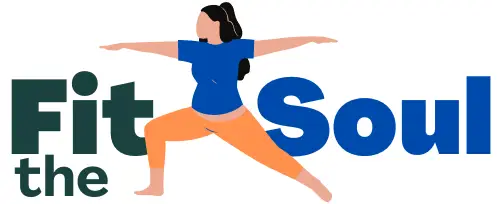

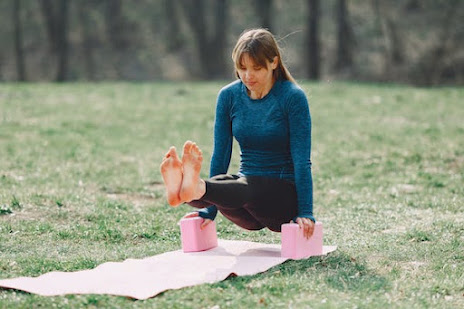
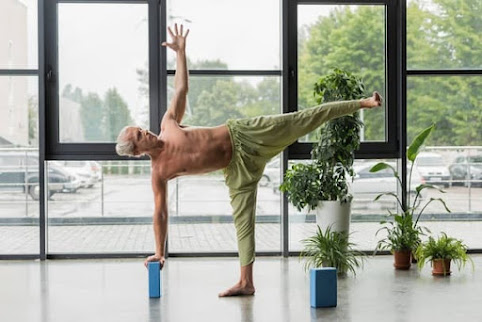
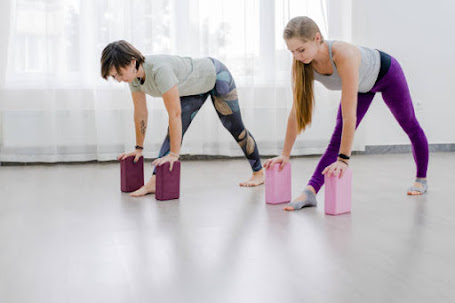



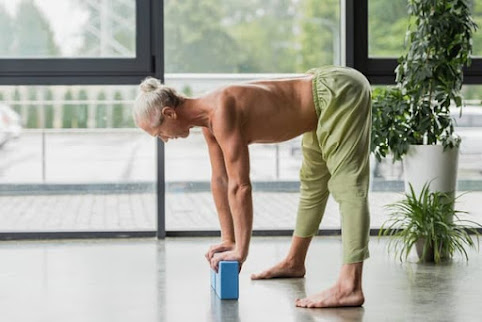


%20Supported%20Shoulderstand.jpg)

